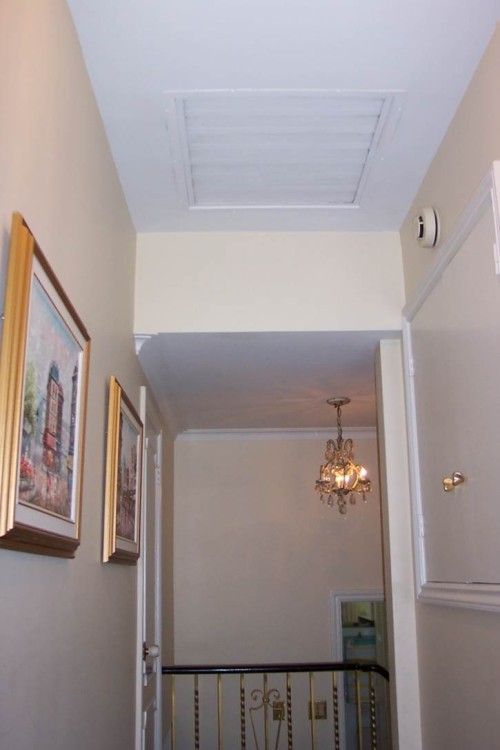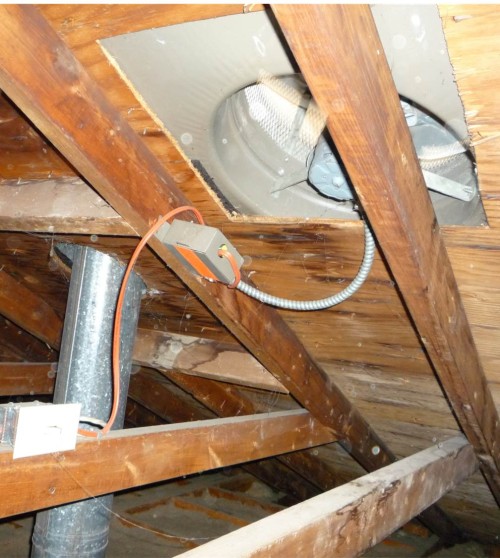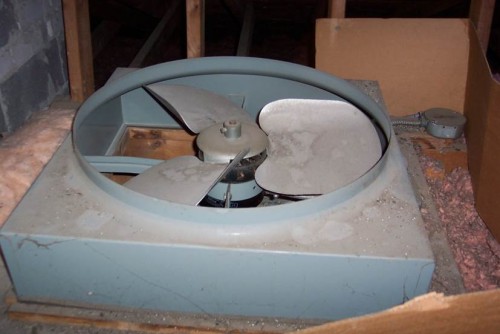Less is best when it comes to mechanical complexity and it holds so true for exhaust systems, especially in cold climates.
Attic exhaust fans installed in open attics are intended to exhaust the moisture laden attic air out and bring in, hopefully, dryer air to replace it. The real question to ask is what’s moisture doing in the attic in the first place? The benefits of not having to pay for the installation, maintenance and operation o an attic exhaust fan if the attic floor were well air sealed are huge!
Generally, stack effect will drive the conditioned space air up and out to the attic if the air barrier system isn’t properly sealed. Seal up the attic floor and the moisture source goes away with no bills to pay and by default in a power outage, the attic stays dry.
Whole-house exhaust fans are a different story. They were more common in the 60’s and 70’s and the concept was, on a hot summer rainy night with a house full of smoking sweaty guests, a large fan connecting the living space to the attic could be turned on and with all the windows in the house open a large fan like this could bring a great deal of comfort to guests.
The problem is the fan itself makes a significant breach in the attic floor’s air barrier system and stack effect tends to drive moisture laden air through this penetration resulting in high attic humidity.
The truth is, we don’t tend to smoke indoors anymore and so the need to move air through a house on a few particular occasions is less of an issue. So if you have one of these fans, consider removing the liability, especially if you insulate your attic.

Seen form below in the central hall of a 1950′s home, this whole house exhaust fan can move lots of air when its on or off.


